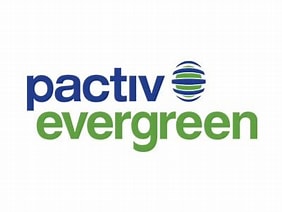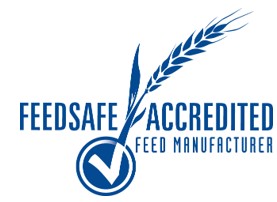Title Page
-
Conducted on
-
Prepared by
-
Location
-
Process Involved
PSM Program Requirements
Employee Participation
-
Employers shall develop a plan of action regarding the implementation of the employee participation required by this section:
-
Employers shall consult with employees and their representatives on the conduct and development of process hazards analyses and on the development of the other elements of process safety management in this standard.
-
Employers shall provide to employees and their representatives access to process hazard analyses and to all other information required to be developed under this standard.
Process Safety Information
-
Information pertaining to the hazards of the highly hazardous chemicals in the process:
-
Toxicity information
-
Permissible exposure limits
-
Physical data
-
Reactivity data
-
Corrosivity data
-
Thermal and chemical stability data
-
Hazardous effects of inadvertent mixing of different materials that could foreseeably occur
-
Information pertaining to the technology of the process:
-
A block flow diagram or simplified process flow diagram
-
Sample block flow diagram
-
Sample process flow diagram
-
Process chemistry
-
Maximum intended inventory
-
Safe upper and lower limits for such items as temperatures, pressures, flows or compositions
-
An evaluation of the consequences of deviations, including those affecting the safety and health of employees
-
Where the original technical information no longer exists, such information may be developed in conjunction with the process hazard analysis in sufficient detail to support the analysis.
-
Information pertaining to the equipment in the process:
-
Materials of construction
-
Piping and instrument diagrams
-
Electrical classification
-
Relief system design and design basis
-
Ventilation system design
-
Design codes and standards employed
-
Material and energy balances for processes built after May 26, 1992
-
Safety systems (e.g. interlocks, detection or suppression systems)
-
Equipment complies with recognized and generally accepted good engineering practices
-
For existing equipment designed and constructed in accordance with codes, standards, or practices that are no longer in general use, the employer shall determine and document that the equipment is designed, maintained, inspected, tested, and operating in a safe manner.
Process Hazard Analysis
-
The process hazard analysis shall address:
-
The hazards of the process
-
The identification of any previous incident which had a likely potential for catastrophic consequences in the workplace
-
Engineering and administrative controls applicable to the hazards and their interrelationships such as appropriate application of detection methodologies to provide early warning of releases.
-
(Acceptable detection methods might include process monitoring and control instrumentation with alarms, and detection hardware such as hydrocarbon sensors.)
-
Consequences of failure of engineering and administrative controls
-
Facility siting
-
Human factors
-
A qualitative evaluation of a range of the possible safety and health effects of failure of controls on employees in the workplace
-
The process hazard analysis shall be performed by a team:
-
with expertise in engineering and process operations;
-
includes at least one employee who has experience and knowledge specific to the process being evaluated;
-
one member of the team who is knowledgeable in the specific process hazard analysis methodology being used.
-
The employer shall establish a system to promptly address the team's findings and recommendations:
-
Assure that the recommendations are resolved in a timely manner and that the resolution is documented;
-
Document what actions are to be taken;
-
Develop a schedule of when these actions are to be completed;
-
Communicate the actions to operating, maintenance and other employees whose work assignments are in the process and who may be affected by the recommendations or actions; and
-
Complete the actions as soon as possible.
-
At least every five (5) years after the completion of the initial process hazard analysis, the process hazard analysis shall be updated and revalidated by the same team who performed the initial PHA or by a team that meets the same requirements as the first team.
-
Employers shall retain process hazards analyses and updates or revalidations for each process covered by this section, as well as the documented resolution of recommendations for the life of the process.
Operating Procedures
-
Steps for each operating phase:
-
Initial startup
-
Normal operations
-
Temporary operations
-
Emergency shutdown including the conditions under which emergency shutdown is required, and the assignment of shutdown responsibility to qualified operators to ensure that emergency shutdown is executed in a safe and timely manner.
-
Emergency operations
-
Normal shutdown
-
Startup following a turnaround, or after an emergency shutdown
-
Operating limits:
-
Consequences of deviation
-
Steps required to correct or avoid deviation
-
Safety and health considerations:
-
Properties of, and hazards presented by, the chemicals used in the process
-
Precautions necessary to prevent exposure, including engineering controls, administrative controls, and personal protective equipment
-
Control measures to be taken if physical contact or airborne exposure occurs
-
Quality control for raw materials and control of hazardous chemical inventory levels
-
Any special or unique hazards
-
Safety systems and their functions
-
Operating procedures provide clear instructions for safely conducting activities involved in each process covered by this standard.
-
Operating procedures are consistent with the process safety information compiled.
-
Operating procedures shall be readily accessible to employees who work in or maintain a process.
-
The operating procedures shall be reviewed as often as necessary to assure that they reflect current operating practice, including changes that result from changes in process chemicals, technology, and equipment, and changes to facilities.
-
The employer shall certify annually that these operating procedures are current and accurate.
-
The employer shall develop and implement safe work practices to provide for the control of hazards during operations such as:
-
lockout/tagout;
-
confined space entry;
-
opening process equipment or piping; and
-
control over entrance into a facility by maintenance, contractor, laboratory, or other support personnel.
-
These safe work practices shall apply to employees and contractor employees.
Training
-
Each employee presently involved in operating a process, and each employee before being involved in operating a newly assigned process, shall be trained in:
-
an overview of the process; and in
-
all of the operating procedures from the previous section.
-
The training shall include emphasis on:
-
the specific safety and health hazards;
-
emergency operations including shutdown; and
-
safe work practices applicable to the employee's job tasks.
-
Refresher training shall be provided at least every three years, and more often if necessary, to each employee involved in operating a process to assure that the employee understands and adheres to the current operating procedures of the process.
-
The employer shall ascertain that each employee involved in operating a process has received and understood the initial and succeeding refresher trainings.
-
The employer shall prepare a record which contains the identity of the employee, the date of training, and the means used to verify that the employee understood the training.
Contractors
-
Employer responsibilities:
-
The employer, when selecting a contractor, shall obtain and evaluate information regarding the contract employer's safety performance and programs.
-
The employer shall inform contract employers of the known potential fire, explosion, or toxic release hazards related to the contractor's work and the process.
-
The employer shall develop and implement safe work practices to control the entrance, presence and exit of contract employers and contract employees in covered process areas.
-
The employer shall maintain a contract employee injury and illness log related to the contractor's work in process areas.
-
The employer shall periodically evaluate the performance of contract employers in fulfilling their obligations, which are:
-
The contract employer shall assure that each contract employee is trained in the work practices necessary to safely perform his/her job.
-
The contract employer shall assure that each contract employee is instructed in the known potential fire, explosion, or toxic release hazards related to his/her job and the process, and the applicable provisions of an emergency action plan.
-
The contract employer shall document that each contract employee has received and understood both initial and refresher trainings.
-
The contract employer shall prepare a record which contains the identity of the contract employee, the date of training, and the means used to verify that the employee understood the training.
-
The contract employer shall assure that each contract employee follows the safety rules of the facility including the safe work practices.
-
The contract employer shall advise the employer of any unique hazards presented by the contract employer's work, or of any hazards found by the contract employer's work.
Pre-Startup Safety Review
-
For new facilities and for modified facilities when the modification is significant enough to require a change in the process safety information, the employer shall perform a pre-startup safety review.
-
The pre-startup safety review shall confirm that prior to the introduction of highly hazardous chemicals to a process:
-
Construction and equipment is in accordance with design specifications;
-
Safety, operating, maintenance, and emergency procedures are in place and are adequate;
-
Training of each employee involved in operating a process has been completed;
-
For new facilities, a process hazard analysis has been performed and recommendations have been resolved or implemented before startup; and
-
For modified facilities, a management of change procedure has been established.
Mechanical Integrity
-
The employer shall establish and implement procedures to maintain the on-going integrity of process equipment.
-
The employer shall train each employee involved in maintaining the on-going integrity of process equipment.
-
Inspections and tests shall be performed on process equipment.
-
Inspection and testing procedures shall follow recognized and generally accepted good engineering practices.
-
The frequency of inspections and tests of process equipment shall be consistent with applicable manufacturers' recommendations and good engineering practices, and more frequently if determined to be necessary by prior operating experience.
-
The employer shall document each inspection and test that has been performed on process equipment.
-
The documentation of each inspection or test identifies the date of the inspection or test, the name of the person who performed the inspection or test, the serial number or other identifier of the equipment on which the inspection or test was performed, a description of the inspection or test performed, and the results of the inspection or test.
-
The employer shall correct deficiencies in equipment that are outside acceptable limits defined by the process safety information before further use.
-
In the construction of new plants and equipment, the employer shall assure that equipment as it is fabricated is suitable for the process application for which they will be used.
-
Appropriate checks and inspections shall be performed to assure that equipment is installed properly and consistent with design specifications and the manufacturer's instructions.
-
The employer shall assure that maintenance materials, spare parts and equipment are suitable for the process application for which they will be used.
Hot Work Permit
-
The employer shall issue a hot work permit for hot work operations conducted on or near a covered process.
-
The hot work permit shall:
-
Document that the fire prevention and protection requirements (of the OSHA Welding, Cutting, and Brazing standard) have been implemented prior to beginning the hot work operations;
-
Indicate the date(s) authorized for hot work; and
-
Identify the object on which hot work is to be performed.
-
The hot work permit shall be kept on file until completion of the hot work operations.
Management of Change
-
MOC procedures shall assure that the following considerations are addressed prior to any change:
-
The technical basis for the proposed change
-
Impact of change on safety and health
-
Modifications to operating procedures
-
Necessary time period for the change
-
Authorization requirements for the proposed change
-
Employees and contract employees involved in operating a process or whose job tasks will be affected by a change in the process shall be informed of and trained in the change prior to start-up of the process or the affected part of the process.
Incident Investigation
-
The employer shall investigate each incident which resulted in, or could reasonably have resulted in a catastrophic release of highly hazardous chemical in the workplace.
-
An incident investigation shall be initiated as promptly as possible, but not later than 48 hours following the incident.
-
An incident investigation team shall be established and consist of:
-
at least one person knowledgeable in the process involved;
-
a contract employee if the incident involved work of the contractor; and
-
other persons with appropriate knowledge and experience to thoroughly investigate and analyze the incident.
-
A report shall be prepared at the conclusion of the investigation and include the date of the incident, the date the investigation was initiated, a description of the incident, the factors that contributed to the incident, and any recommendations resulting from the recommendation.
-
The employer shall establish a system to promptly address and resolve the incident report findings and recommendations.
-
Resolutions and corrective actions related to the incident shall be documented.
-
The report shall be reviewed with all affected personnel whose job tasks are relevant to the incident findings, including contract employees where applicable.
-
Incident investigation reports shall be retained for five years.
Emergency Planning and Response
-
The employer shall establish and implement an emergency action plan for the entire plant.
-
The EAP should:
-
Meet the requirements of the OSHA Emergency Action Plans standard;
-
Include procedures for handling small releases; and
-
(If it applies to the organization) Meet the requirements of the OSHA Hazardous Waste Operations and Emergency Response standard.
Compliance Audits
-
Employers shall certify that they have conducted a compliance audit at least every three years to verify that the procedures and practices developed under the standard are adequate and are being followed.
-
The compliance audit shall be conducted by at least one person knowledgeable in the process.
-
A report of the findings of the audit shall be developed.
-
The employer shall promptly determine and document an appropriate response to each of the findings of the compliance audit, and document that deficiencies have been corrected.
-
Employers shall retain the two (2) most recent compliance audit reports.
Trade Secrets
-
Without regard to possible trade secret status, employers shall make all information necessary to comply with the standard available to employees involved in the development of the PSM program.
-
Subject to the rules and procedures set forth in the OSHA Hazard Communication standard, employees and their designated representatives shall have access to trade secret information contained within the documents required by the standard.
Validation of Compliance/Non-Compliance
-
Compliant: At or above 105/135 or approximately 75%<br>Non-Compliant: Below 105/135 or approximately 75%
-
This is to confirm that the PSM program being reviewed is compliant with the OSHA PSM standard.
-
Not an official confirmation by OSHA or any other regulatory authority. For internal purposes only.
-
This is to confirm that the PSM program being reviewed is NOT compliant with the OSHA PSM standard.
-
Not an official confirmation by OSHA or any other regulatory authority. For internal purposes only.















